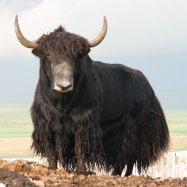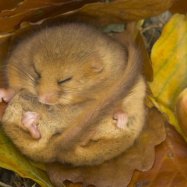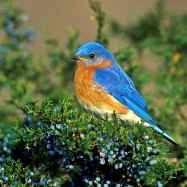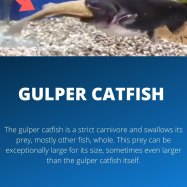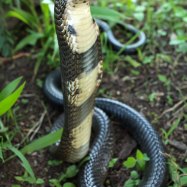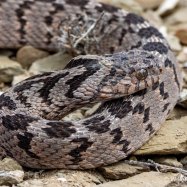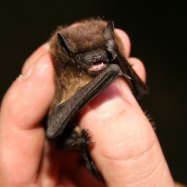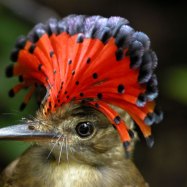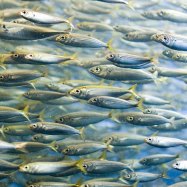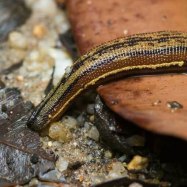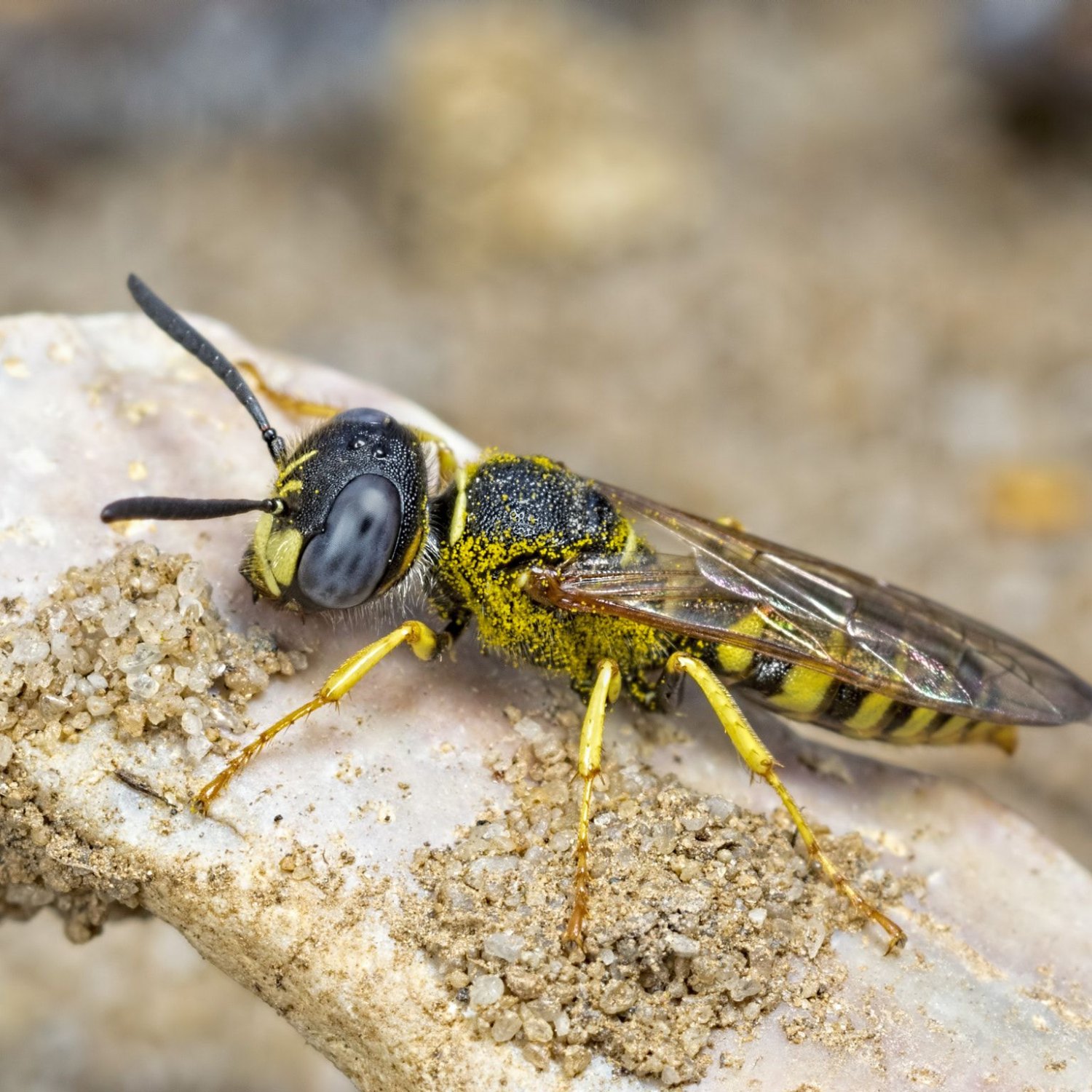
Beewolf Wasp
12 - 18 mm
The Beewolf Wasp, commonly found in Europe, belongs to the Crabronidae family and measures 12-18 mm in length. Its slender and elongated body shape allows it to easily navigate through various landscapes in search of prey. Keep an eye out for this fascinating insect on your next outdoor adventure. #BeewolfWasp #Europe #Crabronidae
Animal Details Summary:
Common Name: Beewolf Wasp
Kingdom: Animalia
Habitat: Open grasslands, meadows, and sandy areas
The Amazing Beewolf Wasp: A Master Hunter of the Insect World
The animal kingdom is full of fascinating creatures, each with their unique abilities and characteristics. One such creature is the Beewolf Wasp, also known by its scientific name, Philanthus triangulum. This predatory wasp species belongs to the Kingdom Animalia and the Phylum Arthropoda, with its class being Insecta. These wasps are part of the order Hymenoptera, which includes bees, ants, and other wasps, and belong to the family Crabronidae Beewolf Wasp.The Beewolf Wasp is a well-known insect among entomologists and nature lovers for its impressive hunting skills and solitary behavior. These wasps are native to Europe, North Africa, and parts of Asia, with their country of origin being Germany. They are commonly found in open grasslands, meadows, and sandy areas, making them a vital part of these ecosystems.
In this article, we will delve deeper into the world of the Beewolf Wasp, its unique characteristics, and its impressive abilities that make it a master hunter of the insect world.
Habitat and Distribution
The Beewolf Wasp is primarily found in Europe, specifically in Germany, Austria, Hungary, and the Czech Republic. However, they can also be found in other parts of the continent, such as France, Spain, and the United Kingdom. In Africa, they are found in countries like Egypt, Tunisia, and Algeria, while in Asia, they can be found in Turkey, Israel, and Iran.These wasps prefer open grasslands, meadows, and sandy areas as their habitat, where they can easily dig their nests and hunt for prey. They are most commonly found in areas with sandy soil, as this is where they build their underground nests Ball Python.
An Impeccable Hunter
What makes the Beewolf Wasp truly remarkable is its impressive hunting abilities. These wasps are carnivorous and feed on other insects, particularly bees, flies, and other wasps. They are skilled hunters, capable of catching prey that is twice their size. They are also known to have a preference for specific insect species, usually targeting bees from the genus Halictus.The Beewolf Wasp's hunting process is as fascinating as it is efficient. Females will dig nests in the ground, where they lay eggs and provide them with food in the form of paralyzed insects. Before laying her eggs, the female will capture a suitable prey and paralyze it with her sting. She will then take the prey back to her nest, where she will lay an egg on it. Once the larvae hatch, they will feed on the paralyzed prey until they are ready to emerge as adults.
This unique hunting behavior sets the Beewolf Wasp apart from other wasp species, as they are not only skilled hunters but also expert providers for their offspring.
Body and Appearance
The Beewolf Wasp has a striking appearance, characterized by its black and yellow coloration. Their body shape is slender and elongated, with six legs and two pairs of wings. The wasp's size can vary between 12 to 18 mm, with females being slightly larger than males.Their black and yellow coloration serves as a warning sign to potential predators, as they are equipped with a painful sting in their abdomen. However, these wasps are generally non-aggressive and will only sting if provoked or threatened.
Solitary Behavior
Unlike other social wasps, such as yellow jackets and paper wasps, the Beewolf Wasp is a solitary insect. This means that they do not live in colonies, and each female is responsible for building and tending to her own nest. They are also selective of their prey and will not share resources with other wasps.This solitary behavior may seem isolating, but it is a crucial survival mechanism for the Beewolf Wasp. By living alone, they reduce the competition for resources and increase the chance of successful reproduction.
A Natural Ally to Humans
The Beewolf Wasp's hunting behavior not only makes them fascinating creatures but also makes them natural allies to humans. These wasps primarily feed on other insects, such as bees and flies, which can be harmful to crops and gardens. The Beewolf Wasp acts as a natural pest controller, regulating insect populations and helping to maintain the balance of ecosystems.In addition to their hunting abilities, Beewolf Wasps also aid in pollination, as they visit flowers in search of nectar and pollen. This makes them beneficial to both farmers and gardeners alike.
Threats and Conservation Efforts
Despite their impressive abilities and importance to ecosystems, Beewolf Wasps are facing threats that could potentially decrease their population. One of the main threats is habitat destruction due to human activities, such as urbanization and agriculture. This destruction of natural habitats limits the wasps' ability to find suitable nesting sites and food, ultimately leading to a decline in their population.In addition, the use of pesticides and insecticides also poses a threat to Beewolf Wasps. As they feed on insects, they can become exposed to these chemicals, which can have harmful effects on their health and reproductive abilities.
To protect and preserve the Beewolf Wasp population, conservation efforts have been put into place. These include creating protected areas and raising awareness about the importance of these wasps and their role in maintaining the balance of ecosystems.
The Beewolf Wasp in Culture
The Beewolf Wasp's unique characteristics and hunting abilities have not gone unnoticed in popular culture. They have been featured in various forms of media, from science documentaries to popular movies and television shows.One famous example is the 1990 film "The Naked Jungle," in which the Beewolf Wasp plays a crucial role in the plot. In the film, the main character must defend his cocoa plantation from an invasion of these wasps, showcasing their formidable hunting abilities.
In Egyptian mythology, the Beewolf Wasp is also referenced as the "bee-wolf" and is believed to be a messenger of the sun god, Ra. This shows the significance of these wasps in different cultures and their prevalence in human history.
The Power of Nature's Design
The Beewolf Wasp's incredible abilities and unique characteristics are a testament to the power of nature's design. From their black and yellow coloration to their solitary behavior and expert hunting skills, these wasps have evolved to adapt to their environment and survive in the wild.As we continue to learn more about these fascinating creatures, we can appreciate the important role they play in maintaining the balance of ecosystems and their relevance in human culture. The next time you see a black and yellow insect buzzing around, take a moment to appreciate the incredible Beewolf Wasp and its masterful hunting abilities.

Beewolf Wasp
Animal Details Beewolf Wasp - Scientific Name: Philanthus triangulum
- Category: Animals B
- Scientific Name: Philanthus triangulum
- Common Name: Beewolf Wasp
- Kingdom: Animalia
- Phylum: Arthropoda
- Class: Insecta
- Order: Hymenoptera
- Family: Crabronidae
- Habitat: Open grasslands, meadows, and sandy areas
- Feeding Method: Carnivorous
- Geographical Distribution: Europe, North Africa, and parts of Asia
- Country of Origin: Germany
- Location: Europe
- Animal Coloration: Black and yellow
- Body Shape: Slender and elongated
- Length: 12 - 18 mm
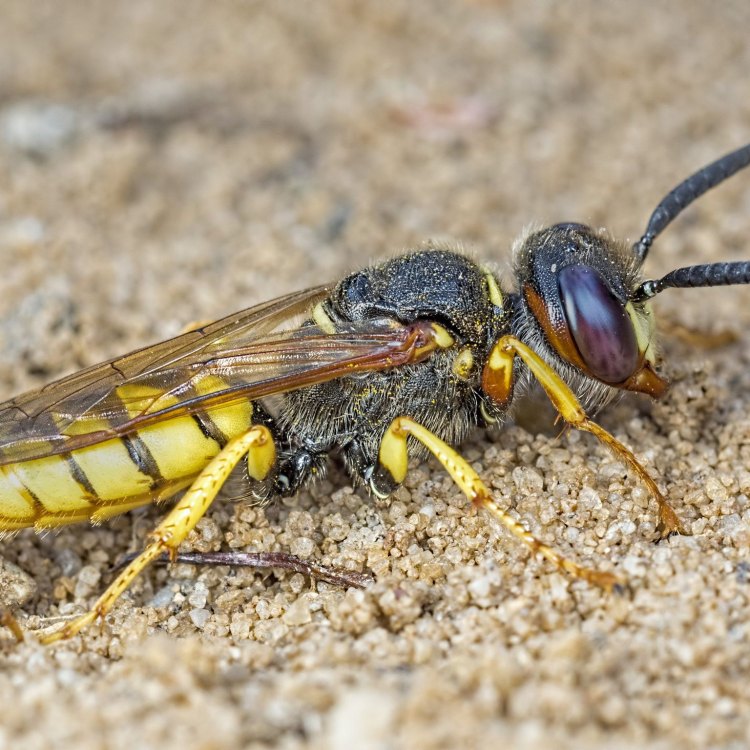
Beewolf Wasp
- Adult Size: Medium
- Average Lifespan: 1 year
- Reproduction: Sexual
- Reproductive Behavior: Mating occurs in summer
- Sound or Call: Buzzing sound
- Migration Pattern: Non-migratory
- Social Groups: Solitary
- Behavior: Females dig nesting burrows in sandy soil
- Threats: Loss of habitat
- Conservation Status: Not evaluated
- Impact on Ecosystem: Pollination
- Human Use: Not used by humans
- Distinctive Features: Long antennae, slender body, strong jaws
- Interesting Facts: Beewolf wasps prey on bees and paralyze them with a sting, then carry them back to their nest where they feed their larvae with the paralyzed bees
- Predator: Birds, spiders
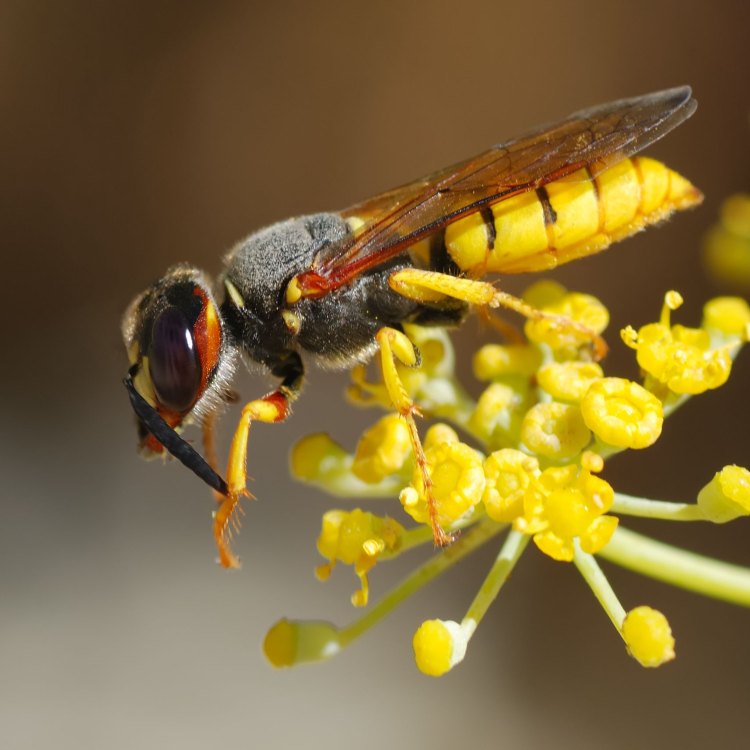
Philanthus triangulum
The Fascinating World of Beewolf Wasps: Predators, Pollinators, and Mothers
Deep in the sandy soils of Europe, North Africa, and Central Asia, there exists a unique and fascinating insect – the Beewolf Wasp. With its delicate yet strong body, long antennae, and voracious appetite, the Beewolf is a master of its craft. It may not be widely known or studied, but this solitary wasp has a vital role in the ecosystem and displays interesting behaviors that sheds light on the complex and intricate web of nature.Average Measurements and Lifespan
Despite its fierce reputation, the Beewolf Wasp is a relatively medium-sized insect, with an average adult body length ranging from 0 PeaceOfAnimals.Com.6 to 0.9 inches. However, its wingspan can reach up to an impressive 2.5 inches. Its slender and elongated body is supported by six long, thin legs, each ending in sharp and powerful claws. The Beewolf also has distinctive long antennae that are longer than its body, making it stand out from other insects.With an average lifespan of just one year, the Beewolf does not have much time to waste. From the moment it emerges from its nest as an adult, it has a short window of time to mate, reproduce, and ensure the survival of its species.
Reproduction Behavior
The Beewolf's reproductive behavior is quite unique Basset Hound. Mating occurs during the summer months, typically in the months of July and August, when the weather is warm and ideal for mating. Once they find a suitable mate, female Beewolves will dig a small nesting burrow in the sandy soil, using their strong jaws to create a safe and secure home for their offspring.The Buzzing Sound of Beewolf Wasps
One of the most distinctive features of the Beewolf is its buzzing sound. As they fly, their wings vibrate, producing a buzzing sound that is not only used for communication but also for navigation. The buzzing sound is created by the friction of the wings against each other, and it can often be heard as the Beewolf flies low over the ground in search of prey.Interestingly, the female Beewolf can control the pitch of the buzzing sound, using it as a form of communication with other wasps. This ability is crucial during mating, as the male Beewolf uses the buzzing sound as a guide to locate the female and engage in a courtship ritual.
Non-Migratory and Solitary Nature
Unlike many other insects, Beewolf wasps are non-migratory and tend to stay within a relatively small area. They establish their territory, usually near sandy areas, and remain there for their entire lifespan. This solitary nature is also evident in their behavior, as they do not form colonies or share their nest with other wasps. Instead, each female Beewolf digs her own nesting burrow and fiercely defends it from other wasps or potential predators.Motherly Instincts
Female Beewolves not only display impressive digging skills, but they also exhibit remarkable motherly instincts. Once the nest is ready, the female will start hunting for bees, their primary prey. Using their long and powerful stingers, the Beewolf attacks and paralyzes the prey, often larger than itself, and brings it back to the nest.The female then lays her eggs near the paralyzed prey, which will become food for her offspring once they hatch. This remarkable behavior not only ensures the survival of the Beewolf offspring, but it also plays a significant role in the ecosystem.
Threats and Conservation Status
Unfortunately, the Beewolf Wasp is facing threats, primarily due to habitat loss. With urbanization and land development, the sandy areas where these wasps reside are disappearing, leaving them with limited places to build their nests. Moreover, pesticides and insecticides used in agriculture can also harm the Beewolf as they prey on bees, which can come in contact with these chemicals.Despite these risks, the Beewolf Wasp's conservation status has not been evaluated yet. As a less-studied insect, it has not received much attention for conservation efforts. However, it is essential to raise awareness about the critical role Beewolves play in the ecosystem and take steps to protect their habitats.
Impact on the Ecosystem
The role of Beewolf wasps in the ecosystem goes beyond being a predatory insect. As mentioned previously, their main prey is bees, and this plays a significant role in pollination. Beewolves help control bee populations, ensuring the balance of insect populations in their ecosystem. Moreover, as they lay their eggs near the paralyzed bees, they contribute to nutrient recycling in the soil, enriching it and making it more fertile for plant growth.Human Use and Interest
Beewolf wasps may not be used by humans for any specific purpose, but their role in the ecosystem is crucial for our survival. As pollinators, bees are essential for agriculture and food production. By controlling bee populations, Beewolves indirectly contribute to our food supply and the overall health of the ecosystem.Moreover, with their unique behaviors and impressive hunting skills, Beewolves have piqued the interest of scientists and researchers. They provide valuable insights into the evolutionary adaptations of solitary wasps and their impact on their surroundings. They are also a popular subject for nature photographers, with their striking appearance and intriguing behavior capturing their attention.
Predators and Enemies
Unfortunately, Beewolf wasps are not invincible, and they do have predators in their ecosystem. Birds and spiders are known to hunt and feed on Beewolves, making them a potential prey item. However, these wasps have developed strategies to protect themselves, such as camouflage and quick movements, which allow them to evade their predators successfully.Final Thoughts
In conclusion, the world of Beewolf wasps is a fascinating one, full of intricate behaviors and vital roles in the ecosystem. These medium-sized, solitary wasps may seem unassuming at first glance, but their unique features and impressive hunting skills make them one of the most intriguing insects in the animal kingdom.As we continue to learn more about the Beewolf Wasp and its impact on the environment, it becomes clear that preserving their habitats is vital for the health and balance of our ecosystem. By appreciating and understanding these remarkable creatures, we can take steps to protect and conserve them for future generations to come.
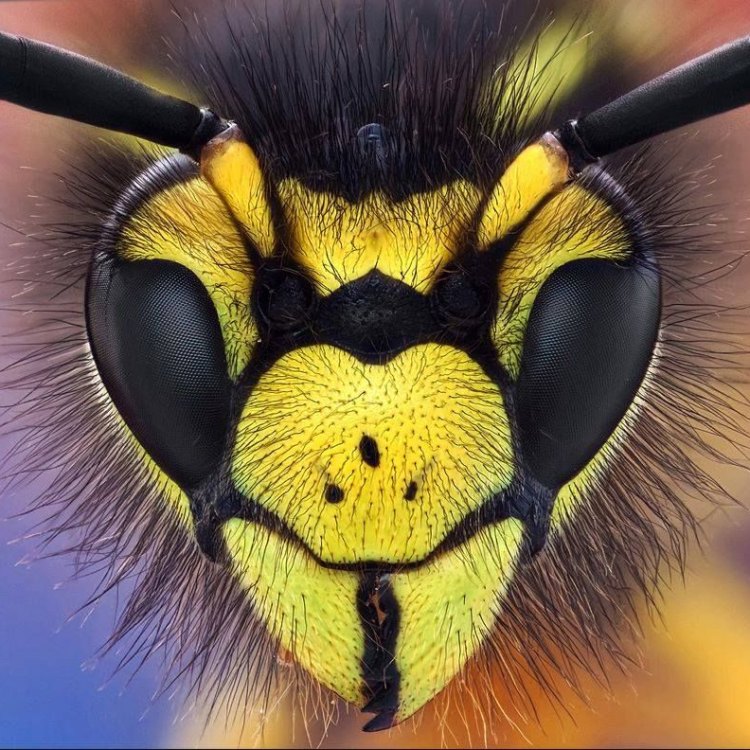
The Amazing Beewolf Wasp: A Master Hunter of the Insect World
Disclaimer: The content provided is for informational purposes only. We cannot guarantee the accuracy of the information on this page 100%. All information provided here may change without prior notice.

